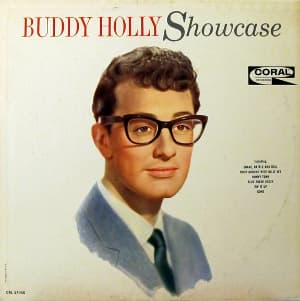
⭐ The Ghost in the Machine: How a Posthumous Album Kept the Rock and Roll Dream Alive
A testament to a towering legacy, this 1964 release breathes new life into an unpolished ’50s groove, forever linking the master to the sound of the honky-tonk floor.
Sometimes, a song isn’t just about the music; it’s about the timing. The release of Buddy Holly’s version of “Honky Tonk” in May 1964 wasn’t a product of a vibrant young rock and roller cutting a fresh track; it was a carefully curated piece of his enduring legend. Released five long years after “The Day the Music Died,” this track was a key component of the posthumous album, Showcase, on Coral Records. In 1964, the world was deep into the throes of the British Invasion—The Beatles and The Rolling Stones were redefining popular music—yet here was a track that reached back to the raw, unpolished spirit of 1956. This context is essential: it’s the sound of the past refusing to be forgotten, and for older listeners, it was a profound, bittersweet reminder of the giant lost too soon.
The original “Honky Tonk” by Bill Doggett was a powerhouse instrumental from 1956, and its success made it a standard in the repertoire of any working band. Buddy Holly, ever the musical sponge, clearly knew and loved the track. His recording of “Honky Tonk” was essentially a rough studio jam session, a testament to his musical instincts and his deep roots in Texas rhythm and blues. The material for the entire Showcase album, including this track, consisted of various unreleased recordings—some dating back to 1956 sessions with Bob Montgomery and others from later periods. However, to make them palatable for the 1964 market, legendary producer Norman Petty employed the New Mexico band The Fireballs to overdub new instrumentation—including bass, drums, and backing vocals—onto Holly’s original, sparse acoustic tapes.
This is where the story gets its nostalgic pull. For listeners in 1964, the album Showcase—and songs like “Honky Tonk”—offered a chance to hear their beloved Buddy Holly in a “new” light. They heard a familiar, bluesy shuffle, but with a punchy, mid-sixties rhythm section underneath it. The chart position for this particular single is elusive because, at the time, its main impact was as an album track on Showcase, which kept Holly’s name prominently in the record bins and on the minds of fans. These posthumous collections often charted well simply on the strength of his name and the longing of his audience, consistently making him a viable artist years after his death, particularly in the UK.
The true meaning of Buddy Holly’s “Honky Tonk” is not about the lyrics (as it is an instrumental adaptation of a vocal song, essentially playing the ‘mood’) but about preservation and influence. It’s a sonic document showing Holly’s deep appreciation for R&B and the way it bled into early rock and roll. It demonstrates how easily Holly could take a standard—a track already owned by the great organist Bill Doggett—and give it his own spin. For those of us who remember the original shock of his loss, hearing “Honky Tonk” years later on Showcase felt like finding a treasured, half-forgotten letter. It’s a bittersweet moment of connection, a reminder that the music stopped too soon, but that the fountain of his talent was deep enough to keep yielding treasures long after he was gone. It’s an act of loving excavation, where the technology of 1963/64 was used to complete the musical thoughts of a genius from the late 1950s, allowing his spirit to rock on through the decade he helped create.